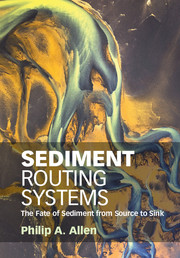Preface
Published online by Cambridge University Press: 03 October 2017
Summary
By far the most powerful way to find out about Earth's history is to study the sediments and sedimentary rocks comprising the stratigraphic record. With this in mind, Doyle and Bennett (1998) stated confidently that
Stratigraphy is the key to understand the Earth, its materials, structure and past life. It encompasses everything that has happened in the history of the planet.
Chris Paola (www.esci.umn.edu/people/chris-paola) observed lyrically and cautiously
Rachel Carson wrote that ‘The sediments are a sort of epic poem of the Earth’. Unfortunately this poem is written in a language we don't understand.
Part of this lack of understanding of the language of the epic poem of the Earth has its origins in the imperfect recording of events in the stratigraphic record, and particularly in the difficulty of deciphering what the English poet Tennyson (1809–1892) called the ‘long result of Time’, since the familiar processes responsible for the liberation, transport and deposition of sediment are best known at the very short timescales of human observation. As James Hutton wrote (1785),
it is not in human record, but in natural history, that we are to look for the means of ascertaining what has already been.
The other part of our lack of understanding derives from the difficulty of seeing the big picture with all of its feedbacks and linkages, which allows us to effectively ‘join the dots’ (Allen, 2014) (ch.1). This big, integrated picture is that of the sediment routing system.
Sediment routing systems are the dynamical systems that link the fate of sediment from source to sink and integrate the processes taking place at or near the surface of the Earth, and the resultant depositional products, at the timescales relevant to the understanding of stratigraphy. They involve a ‘cascade’ of sediment from primarily erosional source areas to depositional sinks, and therefore are responsible for upland landscapes and their sediment and solute effluxes, transport across the continental surface and delivery to the ocean, and dispersal into long-term depositional sites in the deep sea. The processes acting in sediment routing systems therefore shape erosional and depositional landscapes and extract sediment to build stratigraphy, the primary archive of the ‘epic poem of the Earth’.
- Type
- Chapter
- Information
- Sediment Routing SystemsThe Fate of Sediment from Source to Sink, pp. ix - xivPublisher: Cambridge University PressPrint publication year: 2017



